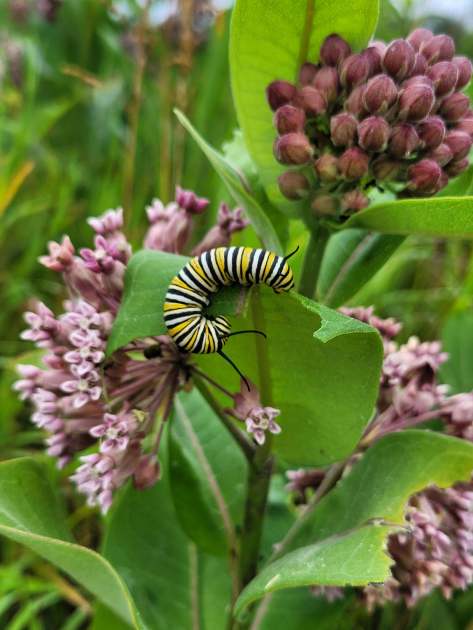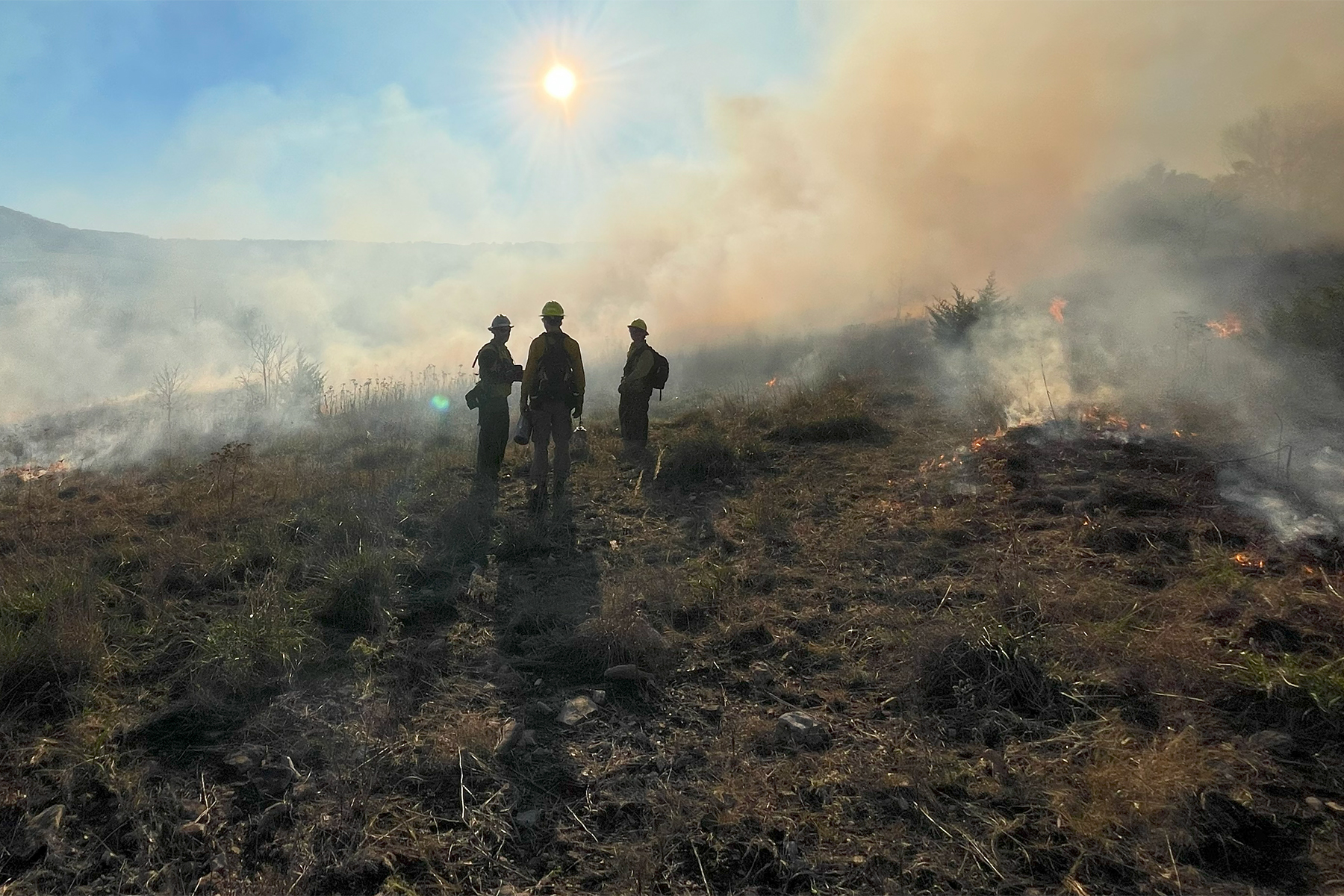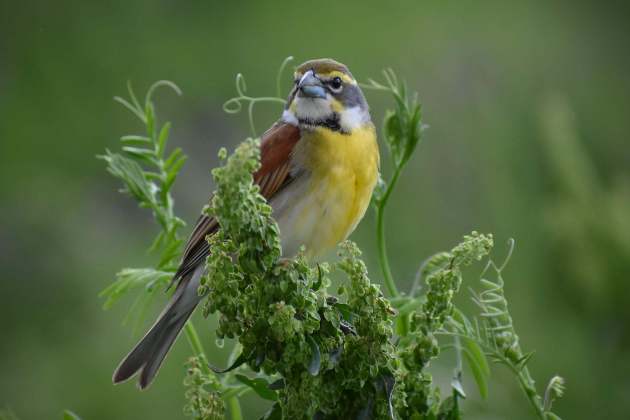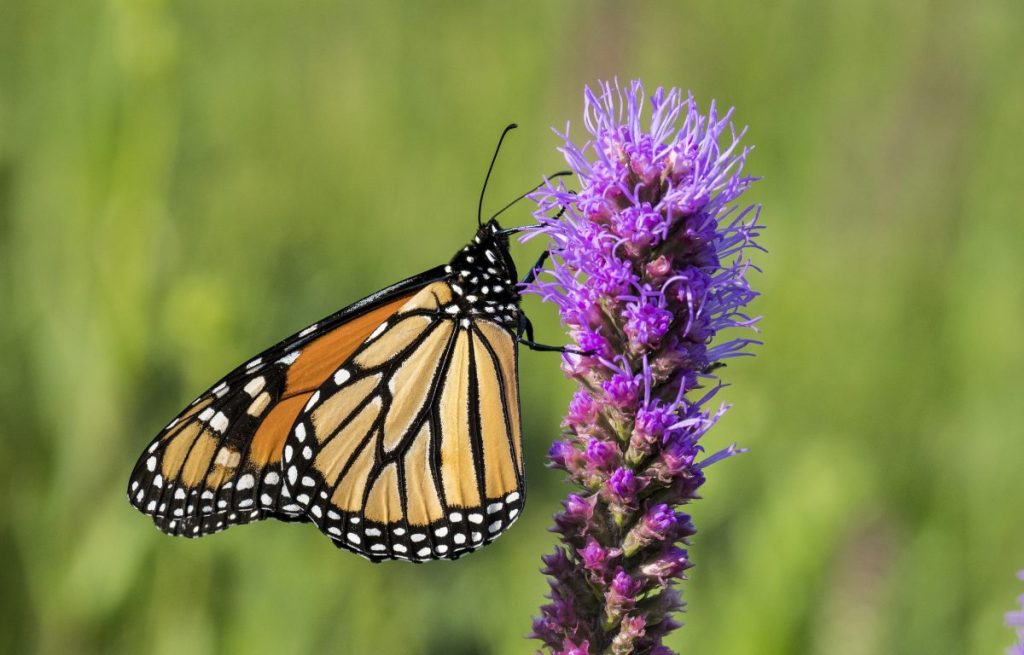You might have noticed this in your own neighborhood: you just don’t see as many monarch butterflies as you used to. It’s not just you. Researchers have documented that eastern populations of monarchs have declined by as much as 80 percent since the 1990s.
This is in no small part due to a loss of habitat for laying eggs and resting along their migration route. The eastern population undertakes an epic, multigenerational migration from their wintering habitat in central Mexico northwards to the eastern and midwestern United States and back.
Along the migration flyway, monarchs need to make pit stops to rest and refuel, just as is the case for migratory birds. Without such places, they run out of the energy needed for those long flights. Nature writer David James Duncan likened it to running a marathon, only to find out at the finish line you had to run another marathon without food, water or rest.

A partnership in Arkansas is restoring pollinator habitat, providing those critical stops for butterflies to nest and feed. Located along the “monarch highway,” this habitat utilizes TNC preserves, protected areas and even roadside ditches to connect habitat for monarchs and other pollinators.
Restoring Connections
Chas McCoy, watershed specialist for The Nature Conservancy in Arkansas, says that monarchs have been affected by habitat loss around the state. He recognized that TNC preserves offered a chance to restore that habitat–but also knew that alone wasn’t enough.
“We’re along the monarch migration flyway and we saw opportunities for monarchs to stop for nectar resources and to lay their eggs,” McCoy says. “But we also wanted to have a greater impact. We saw that we could achieve more through partnerships.”
In 2020, TNC received a grant from the National Fish and Wildlife Foundation’s Monarch Butterfly and Pollinator Conservation Fund. Last year, it was awarded $200,000 more from the foundation for monarch and pollinator restoration.
“Our success in securing this highly competitive funding twice in the past four years is largely due to our collaborative approach,” says McCoy. “By partnering with the Arkansas Department of Transportation (ARDOT) and the Arkansas Natural Heritage Commission (ANHC), we have leveraged over $180,000 in state funding. This partnership amplifies our conservation efforts and brings more conservation resources to bear in Arkansas.”
Become a Member
Make a lasting impact for nature when you join The Nature Conservancy
The funding will enhance pollinator habitats through prescribed burns, invasive plant control and seeding of native grasses and wildflowers, particularly milkweed, which is the sole host plant for monarchs.
The project will enhance approximately 4,600 acres of pollinator habitat. This includes state-maintained road rights-of-way where management practices will be more pollinator friendly. The rights of way will be mowed less frequently and protected while plants are flowering.
“This project has been designed to leverage each others’ work towards a bigger outcome,” says McCoy.
Burn. Treat. Seed.
Around the United States, TNC preserves have often provided connectivity for migrating wildlife. In Arkansas, McCoy says that restoring habitats on those preserves could offer substantial habitat for migrating pollinators.
The key to restoration can be boiled down to three words: Burn, treat, seed.
The Kings River Preserve in the Ozarks provides a textbook example for this approach. “It’s a 5,000-acre preserve protected for its river corridor,” says McCoy. “But, of course, it also includes the land around the river.”
There was a 500-acre parcel that had previously been used for cattle grazing. It had set fallow for at least a decade.

“We wanted to reintroduce fire here,” McCoy says. “Historically, fires burned on two to three-year intervals. It was frequent. That led to an increase in plant diversity which in turn benefited wildlife.”
But most of this section of Kings River Preserve had not burned in decades. When an area like this is treated, it’s called a first-entry burn, requiring careful planning and extra resources to prepare and manage the land effectively.
Following the burn, non-native vegetation has to be controlled to give native species a chance. “Sometimes there’s a native seedbank,” says McCoy. “Other times, the land is so heavily altered we need to reseed.”
Milkweeds are integral to the reseeding. Monarchs are milkweed obligates, meaning they need the milkweed to lay their eggs.
Beyond Pollinators
Monarch butterflies are a charismatic species and people care about them. And restoring habitat for the butterflies brings other benefits. Simply put, healthy pollinator habitat is great habitat for many other species.
At TNC’s Logan Springs Preserve, the site of additional pollinator habitat enhancement, endangered gray bats use the property. “By improving habitat for pollinators, you’re improving habitat for lots of other invertebrates,” says McCoy. “In turn, this healthy, robust insect population provides food for those endangered bats.”
The habitat is also utilized by migratory songbirds and northern bobwhite, a popular gamebird that has seen significant declines. “From bird watchers to bird hunters, all have a stake in healthy habitat,” says McCoy.

While the conservation funded by the two NFWF grants and leveraged state funding will result in impressive pollinator conservation, it isn’t an ending point. “There is still a long road ahead in keeping this as high-quality habitat,” McCoy says. “Keeping fire on the landscape and controlling invasive species will be necessary, well, basically forever. It’s going to be a lifelong pursuit.”
That means continued partnership–and engaging the public–are vital to improving the future for monarchs and other pollinators. The Arkansas Monarch Conservation Partnership, which brings together all the organizations interested in improving habitat for monarchs, is working to conserve pollinator habitat through strategic planning, enhancing habitat, and research and monitoring across the state. It includes agencies, non-profit organizations and private companies.
“This project has been partnership-focused from the start,” says McCoy. “And we’re always looking for ways to collaborate and keep moving monarch conservation forward. There’s an opportunity here to show how working together on connected habitats shapes a hopeful future for pollinators.”
This project is made possible through a grant from the National Fish and Wildlife Foundation, with support from the Monsanto Company.




Join the Discussion